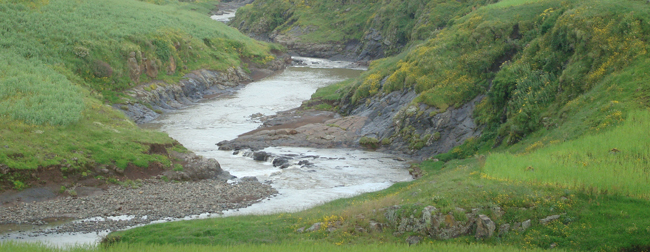Challenges
Disconnected protected areas cannot support viable populations of Africa’s treasured species.
Wildlife move in and out of protected areas, such as national parks and reserves, with some migratory species, even traversing vast rangelands along ancient wildlife corridors.
Protected areas alone cannot support ecologically important species and ecosystems, and human development is fragmenting habitat and severing connections between conservation areas.
Habitat loss is the number one threat to wildlife in Africa today.
As development in Africa continues, agriculture, infrastructure such as pipelines and roads, as well as resource extraction contribute to the destruction of wildlife habitats.
These changes in land-use are fragmenting natural habitats and wildlife migration corridors. Not only does this ecological loss impact the long-term survival of wildlife populations, but it also erodes the ecosystem services that will help us mitigate climate change impacts and escalate human-wildlife conflicts.

Solutions
Worldwide, protected areas are experiencing a multi-billion-dollar funding shortage. AWF has a long history supporting protected area authorities with technical input, infrastructural development, planning, and capacity development.
We provide wildlife authorities across the continent with the training, equipment, and capacity needed to sharpen their response to threats on the ground and enhance protected area management. AWF supports protected areas in business and tourism planning to enable them to generate enough income to support the management of their protected areas and contribute to the local and national economy.
In the interest of making longer-term investments and obtaining joint decision making with partnering protected area authorities, AWF also engages in co-management agreements with authorities. This approach to protected area management allows AWF to provide long-term financial and technical support, allows for a flexible structure that can include additional stakeholders, like neighboring communities, and opens the door for increased financing opportunities.
In addition to supporting protected areas, AWF is also working to expand key protected areas, like Rwanda’s Volcanoes National Park, to increase land under conservation. Expansions provide more habitat for threatened species, supports wildlife-based tourism economy and helps prevent human-wildlife conflict.
AWF supports the development of conservation and land use plans that protect priority conservation targets while simultaneously supporting smart, sustainable development. AWF takes a holistic approach considering ecological values and trends, human population dynamics, infrastructural needs, land tenure, policy framework, climate change, current and projected land use, and natural resource management.
AWF collaborates with local communities and protected area authorities to design, develop, and implement plans for protected area management, tourism development, climate change mitigation and adaptation, species management, micro-and macro-level planning, and ecosystem management.
To reduce habitat loss, AWF provides livelihood alternatives to communities living in Africa’s critical landscapes. From training farmers in sustainable agriculture to developing beekeeping enterprises and beyond, AWF is working with communities to ensure their needs are met without detrimental effects to land.
We are also working directly with communities to create community conservation areas. Serving as a complement to state-owned protected areas, conservancies expand land under conservation protection, provide additional wildlife habitat, and diversify land management to provide a range of habitat types that support a broader diversity of wildlife and ecosystems.
Conservancies provide direct financial benefits to communities and engage community members and private landowners in conservation, incentivizing land and wildlife protection and increasing the number of people benefiting from conservation, and decreasing animosity toward wildlife.
